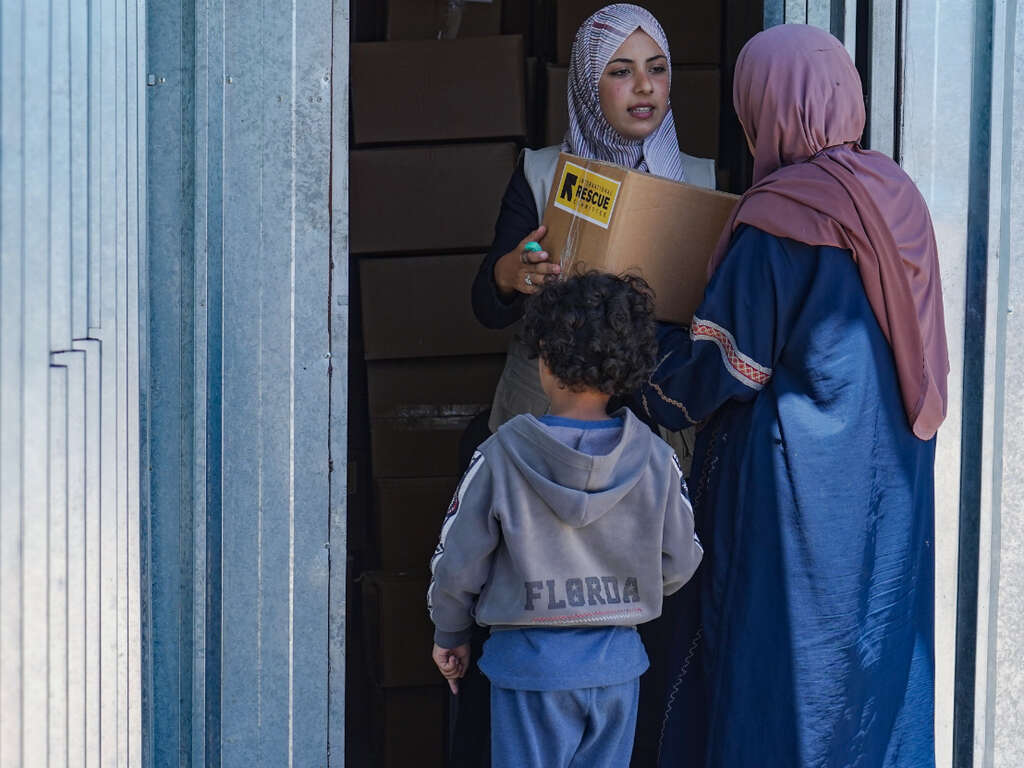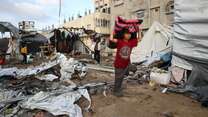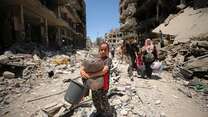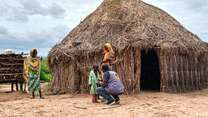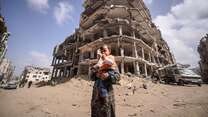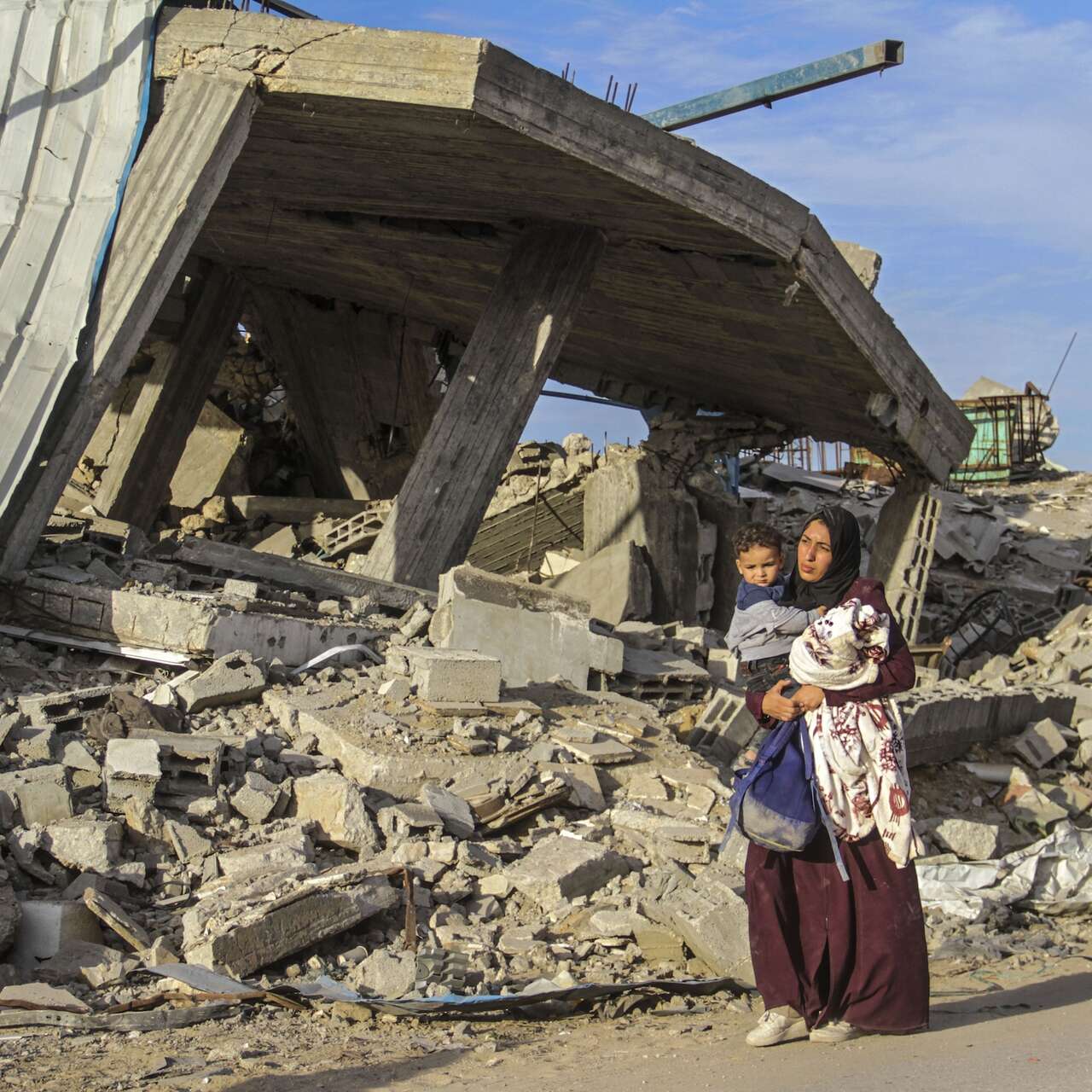
Over 69,000 Palestinians have been killed in Gaza, according to OCHA, which bases its figures on the Gaza Ministry of Health statistics, and more than 170,000 injured since October 7, 2023. Israeli forces began airstrikes and ground operations after Hamas and other armed groups launched a deadly ground incursion and rocket barrage on southern Israel.
More than two years of conflict have left over two million Palestinians, half of whom are children, without access to sufficient water, food or medical care. Famine conditions are still a deadly reality in Gaza.
The adoption of the first phase of a peace plan for Gaza, which includes expanded humanitarian access into Gaza and the release of hostages, presents an opportunity to address humanitarian suffering. The IRC urges all parties to uphold international humanitarian law, protect civilians and critical infrastructure, and ensure that this agreement becomes a first step toward a permanent end to the war and lasting peace for all people in the Middle East.
Without a durable end to hostilities and guaranteed humanitarian access across Gaza, millions of civilians will remain at risk.
What you need to know about the ceasefire in Gaza
On Friday, October 10, 2025, a ceasefire went into effect. The agreement provided commitments to increase humanitarian aid and access, as well as to secure the release of hostages, which occurred shortly after the deal was reached.
Going forward, for the plan to be effective in addressing critical needs, it must ensure the rapid and unimpeded delivery of humanitarian aid and safe and predictable access for aid workers and civilians, including in northern Gaza where needs are most acute. Food, fuel, water and medical supplies must begin to flow in immediately and the steps agreed should lead to a lasting ceasefire.
“After two years of conflict, everyone should welcome the news of a ceasefire. Civilians desperately need it—together with a massive scale up in humanitarian aid and access,” explains IRC CEO and president, David Miliband.
“Meanwhile, with 55,000 Palestinian children suffering from acute malnutrition and 90% of the population displaced, what is needed now is a dramatic surge in the amount of aid going into Gaza. The IRC will scale up protection, health, nutrition and water and sanitation services. Civilians need the opening of all aid crossings and rapid and unimpeded humanitarian access to people in dire need.”
The first phase of the plan offers the prospect of much needed safety, but success should be measured by the duration and permanence of the halt to the destruction of Gaza, and whether it is matched by a surge of life saving aid.
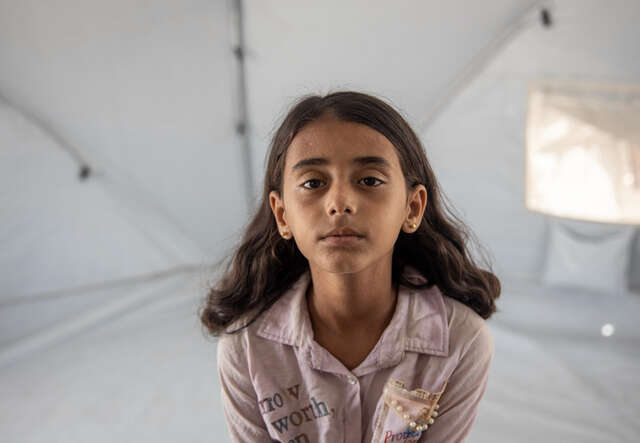
What needs to happen after the ceasefire in Gaza?
A ceasefire alone will not address the immense humanitarian needs in Gaza. For the plan to be effective, the following four urgent actions must follow:
- Rapid delivery of humanitarian aid at a large scale—Food, water, medical, nutrition and shelter supplies and the restoration of basic infrastructure (water, electricity and sanitation) are urgently needed to meet the overwhelming needs of the population and treat those experiencing famine, particularly in northern Gaza where conditions are most severe.
- Open all border crossings for aid—All crossings must be opened to enable the rapid delivery of scaled-up assistance as well as the movement of expert humanitarian staff. This access is vital for NGOs to bring in critical supplies that have been held at border points and to quickly move assistance to people all over Gaza.
- Establish a lasting and durable peace—Unlike previous ceasefires, this one must endure and pave the way for a lasting peace in the region. A permanent cessation of hostilities and safe conditions on the ground is the only way to fully protect Palestinian lives and to allow for the safe, rapid and unimpeded scale-up of humanitarian assistance, and enable Palestinians to begin rebuilding their lives.
- Ensure sustained funding for humanitarian efforts—As aid efforts expand, sustained funding for humanitarian organizations like the IRC is essential to allow us to scale up and meet the overwhelming needs faced by Gaza’s population.
After two years of war, Gaza’s infrastructure is shattered. The ceasefire agreement marks the beginning of an opportunity to rebuild, but it will take decades of sustained support and reconstruction for communities to find any sense of normalcy again.
War has caused mass destruction in Gaza
More than two years of war have left Gaza in ruin. Israeli airstrikes, bombing and ground-level fighting between Israel and Hamas have killed over 69,000 Palestinians according to OCHA, destroyed critical infrastructure, including homes, hospitals, schools, shelters, religious sites and essential services like bakeries. Gaza remains one of the most dangerous places in the world, and Palestinians are being pushed to the edge of survival, struggling to access food, clean water and life-saving medical services.
Civilians injured in the conflict and those suffering from everyday health problems are increasingly unable to access basic care. Only 14 of Gaza’s 36 hospitals are even partially functional—and they’re understaffed, lacking proper medical supplies and overwhelmed with patients. The IRC has more than 5 tonnes of life-saving medical supplies and hygiene items—which we have been prevented from bringing into Gaza for several months—ready to enter, assist thousands of people and support a health system that is collapsing.
Children bear a disproportionate burden of the crisis. Thousands of children have been killed. Verified reports confirm that children in Gaza are dying from preventable diseases, suffering from life-changing injuries and are missing out on years of education.
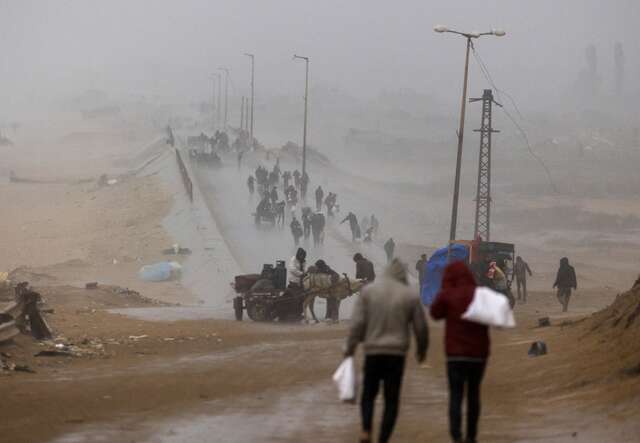
Mass displacement in Gaza
Over 90% of homes in Gaza have been damaged or destroyed, leaving nearly 1.9 million Palestinians without a permanent and safe place to live. People are seeking refuge in tents or makeshift shelters that fail to provide safety or dignity.
With the first phase of a ceasefire in place, families are returning to neighborhoods with no functioning services, little food in the markets and hospitals that—though heavily damaged—continue the struggle to serve the injured and sick.
As winter approaches and rain begins, thousands of families remain in tents, and many have no shelter supplies. Restrictions on humanitarian aid must be lifted so that organizations like the IRC can provide critical aid to Palestinian families who have already endured more than two years of devastating war.
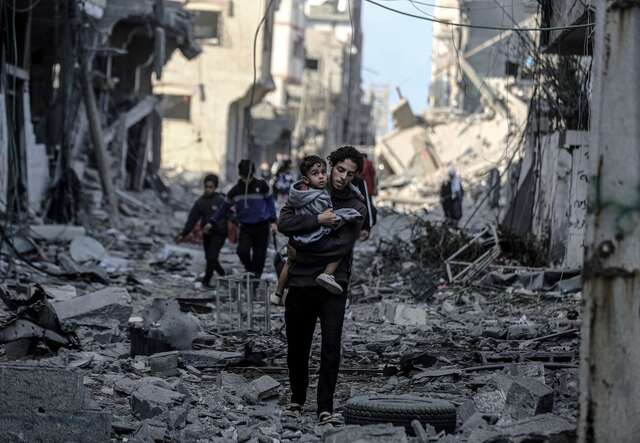
Famine conditions are a deadly reality in Gaza
In August 2025, the Integrated Food Security Phase Classification (IPC) alert confirmed the unthinkable: famine had taken hold in Gaza City. All three thresholds of famine—catastrophic hunger, acute malnutrition and mass death—had been officially surpassed.
Abdelraheem Hamad, an IRC staff member inside Gaza, reports:
“People are collapsing in the streets from emaciation. One day, I saw a child digging through a pile of trash for food. He found nothing—there are no scraps left. That moment captured the meaning of famine in a way words cannot describe. At home, I had only two loaves of bread to feed six people.”
Famine conditions are still a deadly reality in Gaza, with almost 55,000 children facing acute malnutrition and more than half a million people in the Gaza Strip facing catastrophic conditions characterized by disease and destitution.
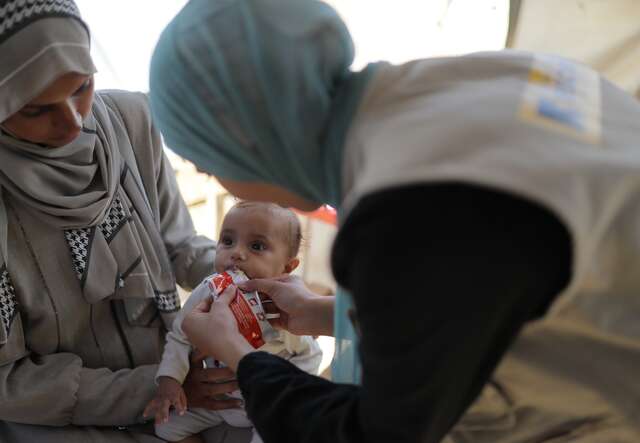
Why aren’t Palestinians receiving enough aid?
The IRC remains concerned that, although aid is now entering Gaza, it continues to fall short of what is needed to meet the immense humanitarian needs. Despite recent improvements in humanitarian access, restrictions remain in place, making it difficult for Palestinians to access life-saving aid.
Throughout the war, persistent Israeli restrictions on the flow of humanitarian aid into and around Gaza have driven a desperate shortage of food, fuel, medicine, equipment and humanitarian staff in Gaza. Humanitarians have been unable to operate effectively and safely under these conditions.
The first phase of the ceasefire in Gaza represents an opportunity to rapidly scale up lifesaving aid and meet the immense humanitarian needs in Gaza. However, restrictions on aid, including on essential health supplies, continue to make it difficult for families to access basic necessities.
Safe passage for humanitarian staff and goods must be guaranteed, all border crossings opened, large-scale humanitarian aid delivered, sustained funding secured and a lasting peace established to truly alleviate the suffering of Palestinians and initiate the reconstruction of Gaza.
How is the IRC helping Palestinians in Gaza?
Throughout the war in Gaza, the IRC has overcome serious challenges to reach Palestinians in need with vital services and save lives every day. In collaboration with our local partners, we have supported the health, education, safety and economic wellbeing of more than 430,000 people since October 2023.
The IRC is expanding our existing programming in protection, sexual reproductive health, nutrition, economic recovery and development, and water, sanitation and hygiene. We have 5 tonnes of medical equipment and hygiene items ready to dispatch to Gaza.
Currently, the IRC is delivering:
- Clean drinking water through water trucking;
- Sanitation and hygiene services—including building emergency latrines and distributing hygiene and menstruation management kits;
- Direct cash assistance to help families meet their urgent needs;
- Malnutrition screening, counseling and treatment for children and their caregivers;
- Protection programs that improve the safety and wellbeing of women and children;
- Mental health and psychosocial support to children and their caregivers;
- Early childhood development activities for children who have their lives uprooted.
The IRC has also delivered food and water to camps for displaced Palestinians, distributed food and supported emergency medical services in the few hospitals still operating.
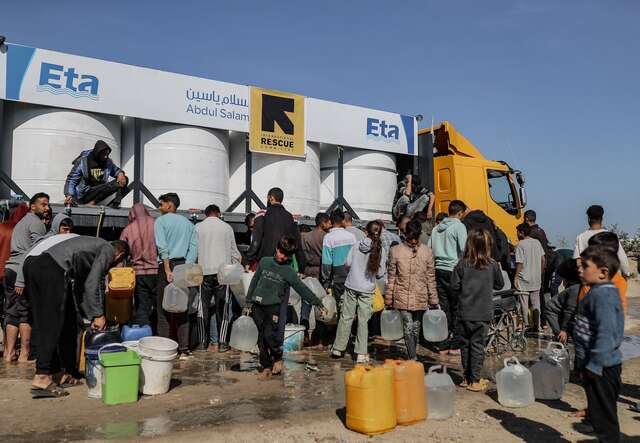
The IRC’s work in the West Bank
In the West Bank, the IRC and our partners have initiated early childhood development activities and support for children and families affected by violence. This includes mental health care, psychosocial support and help for survivors of abuse, as well as training frontline workers to respond in a safe and respectful way.
We are also supporting the Ministry of Health in helping communities become more resilient. This involves improving access to health services, training health workers to identify protection concerns and strengthening emergency preparedness. We're working closely with local partners to make sure efforts align with national plans, connect health services with protection support and reach the areas most in need.
How can I help Gaza?
A ceasefire alone will not address the massive needs in Gaza, as nNearly all civilians in Gaza are in urgent need of humanitarian assistance.
Donate: Despite restrictions on aid delivery, the IRC continues to reach Palestinians with lifesaving health care, cash and emergency support. With operations in more than 40 countries around the world, your donation to the IRC will deliver critical aid where it's needed most.
$80 can provide medical care for a malnourished child throughout the course of treatment.
$250 can provide a family with the most essential necessities for survival for a month.
Our ratings: The IRC consistently earns top marks from charity watchdog groups for our efficient use of donor contributions and the effectiveness of our work.
Stay connected: Follow the latest from the IRC and share posts from our Instagram, LinkedIn, Facebook, Bluesky and X accounts with your network.
Read more about the top 10 crises the world can’t ignore in 2025 and learn more about the IRC's 2025 Emergency Watchlist.
